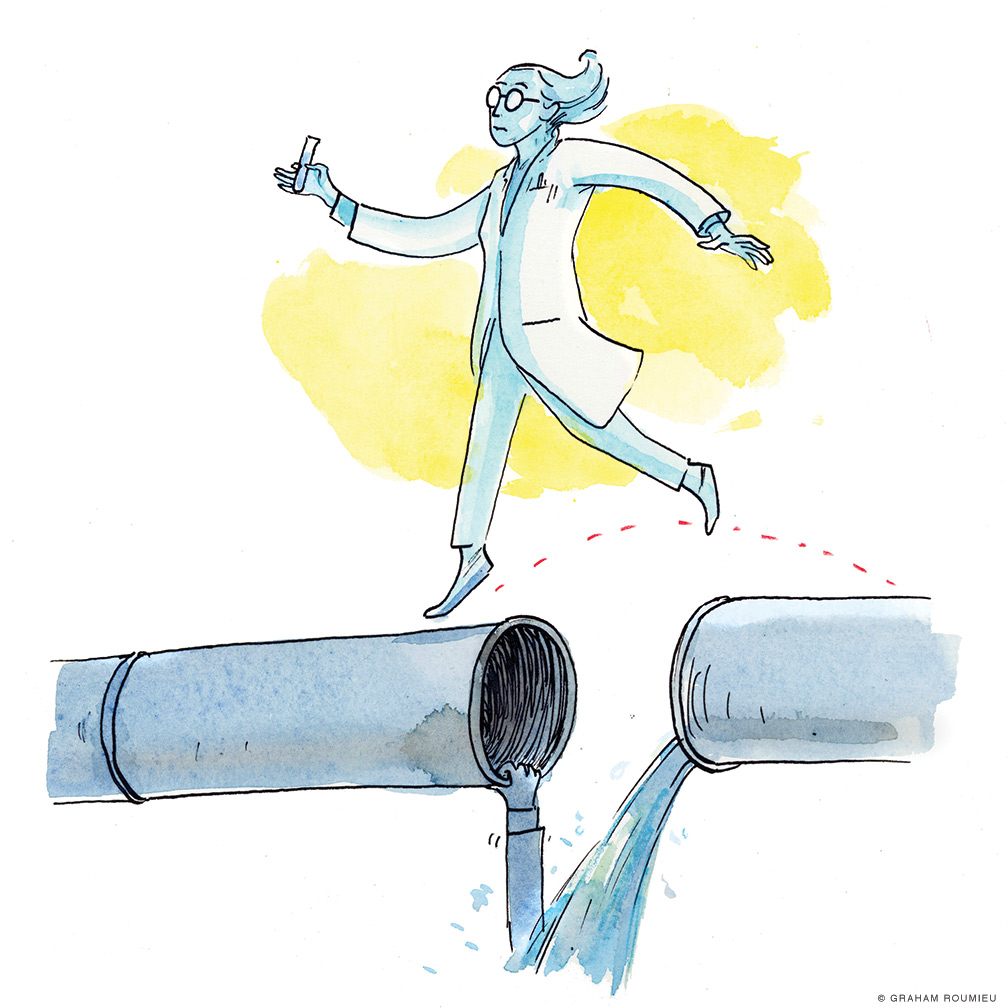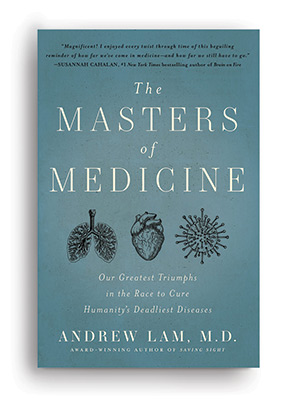
How the US biomedical research system hinders young scientists and undercuts the innovative spirit.
By Andrew Lam
We live at a time when extraordinary medical advances seem commonplace. From mRNA vaccines to stem cell transplants to immunotherapy against cancer, we are living in a golden age of technological discoveries and should be forgiven for believing that such progress is both inexorable and inevitable. But that is not the case. My research for a book on medical breakthroughs shows that medical progress is not linear. It advances in fits and starts—driven, most often, not by hard work or serendipity, but by the mavericks among us.
Mavericks are people with the imagination and creativity to think outside the box. Their minds are receptive to the possibility that an inquiry might yield answers to questions neither they, nor anyone else, has previously thought to ask. They view problems from a new perspective, and have the courage to follow their convictions even when it goes against convention. They are, in short, brilliant.
Edward Jenner was a maverick who, in 1796, vaccinated a boy with cowpox and then, in a daring act, intentionally infected the boy with lethal smallpox to validate a hunch. Ignaz Semmelweis was a 19th-century obstetrician who realized that doctors themselves were causing maternal deaths from puerperal fever after childbirth when they failed to wash their hands before pelvic exams; his crusade to correct this led to ridicule and ultimately his death in an insane asylum. Frederick Banting was a failed surgeon who, in 1920, had an epiphany that led to the discovery of insulin, galvanizing a field completely different from his own. Andreas Grüntzig was a young East German doctor who contrived to glue a balloon to the tip of a catheter and use it to widen narrowed arteries; his first successful coronary angioplasty in 1977 was one of the greatest advances of the 20th century.
The most important question we can ask ourselves today is, where will the next medical mavericks come from and how can we support their development? While it is unquestionably difficult to predetermine which young scientists will become future Nobel Prize winners, there is one thing we can certainly do to serve humanity: maximize the number of physicians and scientists engaged in research and the fight against disease to increase the pool of possible mavericks. On this measure we have significant room for improvement. A look at the highest levels of scientific research, where the greatest discoveries are likely to be made, reveals conditions that deter many young scientists from staying in their fields.
For one thing, it is now harder than ever for investigators to receive research funding from the National Institutes of Health. In the year 2000, slightly more than 30 percent of NIH grant applications were approved. This funding rate has steadily declined and in 2020 had dropped to approximately 20 percent. This means only one in five projects proposed by scientists moves ahead. As a result, investigators are spending more and more of their time writing research grants instead of performing actual research, and the intense competition for funding means scientists are less likely to take risks and propose novel research ideas. The system also appears to favor well-known or experienced scientists over up-and-coming young ones, and may be biased against women and minority researchers.
Another, potentially greater, hindrance to future discoveries is the attrition of scientists in academia as countless PhD graduates become discouraged and disillusioned by a traditional system of advancement that seems to disfavor them at every turn. In every college in America, promising science students are encouraged to pursue doctorates. They spend years working toward their degrees, which many do not attain until their 30s. Unfortunately, these new graduates quickly learn that there are far too many of them vying for far too few tenure-track university positions. In the field of biomedicine, it has been estimated that fewer than one in six PhD graduates will succeed in attaining such a post. This means that over 80 percent will never get the job they trained for: to pursue their own original research and lead a team of younger investigators. Instead, many scientists find themselves spending years in limbo, working as “postdocs,” a term denoting junior scientists who work for tenured professors as they wait to secure a permanent position that will likely never materialize.
Postdoctoral researchers serve as the supremely well-educated, cheap labor that works at the direction of those vaunted, few professors atop the research pyramid—professors who sometimes compound the problem if they become reluctant to retire. A 2018 study that surveyed data on almost 14,000 postdoc employees revealed a median annual salary of $47,484, indicating that half earned less than this, some potentially as low as $23,660. These income levels prove untenable for many people in their 30s and 40s, at a time when they are likely to be having children and building their families. Add low pay to poor job security and no guarantee of advancement, and it’s no wonder that many of our most brilliant young scientists leave academia to seek jobs in industry or on Wall Street that pay salaries five or ten times higher.
A 2020 survey by the journal Nature revealed that 55 percent of biomedical researchers held a negative view of their job prospects. These are dedicated, well-trained, accomplished professionals—top students who devoted over a decade of their lives to the pursuit of science. Even luminaries like Emmanuelle Charpentier, who won a Nobel Prize in 2020 for codiscovering CRISPR gene editing, spent 25 years of her career bouncing around among various positions at nine different institutions before landing as a director at the Max Planck Institute for Infection Biology in Berlin in 2015.
Facing long odds, numerous young researchers burn out, quit, or move on to other jobs. As a result, approximately half of America’s postdoctoral workers are foreigners from countries like China. Immigrants appear more willing to accept the modest wages and dim prospects that many Americans will not. But now, even this is beginning to change. As countries like China catch up to and in some arenas even surpass the US in science and technology, increasingly fewer foreigners are willing to come. Instead, they choose to stay in their home countries, which benefit from their talents.
The United States has a well-worn tradition of importing great scientists. European professors fleeing the Nazis were integral to the Manhattan Project. The Cold War prompted a relaxation of immigration restrictions to allow a wave of physicians, engineers, and scientists from Asia in the 1960s and 1970s. But in this century, it would be unwise to count on importing our geniuses. It is more prudent to develop and nurture homegrown talent. It is not enough to merely encourage students to become scientists—we must also show our commitment to their success by paying them appropriately, funding more of their proposals, and giving them secure paths to careers in which they continue to apply their talents toward making discoveries.
We need new mavericks to push forward into novel arenas of discovery, and it will fall to members of the next generation to take up the mantle of scientific innovation, knowing that medical progress is far from assured. Our children and grandchildren must meet the challenges of this century and the next to expand upon the astounding progress we’ve made. In the blink of an eye, they will be our physicians and surgeons. And there is no predicting which one of them will make the next crucial breakthrough.

Andrew Lam M’02 is a retina surgeon, assistant professor at the University of Massachusetts Medical School, and author of the new book The Masters of Medicine: Our Greatest Triumphs in the Race to Cure Humanity’s Deadliest Diseases, from which this essay is adapted with permission of BenBella Books. Learn more at AndrewLamMD.com.




